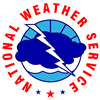
A winter storm system will rapidly intensify over the Midwest on Sunday and track through the Great Lakes on Monday. Periods of heavy snow are anticipated across the Upper Great Lakes late Sunday and continuing into Monday. At least 1/10 inch of ice accumulation is expected from a wintry mix across much of the interior Northeast U.S. starting Sunday afternoon. Read More >
Overview
|
A Storm Damage Survey from the National Weather Service Forecast Office in Pueblo, CO was conducted, and a preliminary EF1 rating was given to the tornado which occurred Sunday evening between approximately 7:12 p.m. and 7:24 p.m. |
 Tornado Track |
 |
 |
| Tornado Narrowly Misses Two Houses | Tornado Misses a House Located on County Road PP |
Photos & Video:
Various Pictures of the Damage and the Tornado
 |
 |
 |
| Paths of Hay Swather that was Carried by the Tornado | Photo Credit: Janet Chenoweth Tornado was 100-150 yards wide; Photo of Tornado Taking out Power Poles |
The Only Damage Indicator was the Damage Done to the Power Poles |
Radar:
Radar Reflectivity and Velocity Scans of the Tornado Event
 |
 |
| Radar Reflectivity Volume Scan of the Tornado Event | Radar Velocity Volume Scan of the Tornado Event |
Environment
A developing upper-level low, centered over Utah on May 23rd, 2010 at 6:00PM MDT, was the major synoptic player in this tornado event. Looking at the surface analysis, there was strong surface flow from the southeast. Comparing Dalhart, Texas ASOS, which indicated southeasterly winds at 20 knots with 68 degree dew point temperature, and La Junta, Colorado ASOS, which indicated southeasterly winds at 30 knots with a 38 dew point temperature, it is clear that the main forcing mechanism was a dry line enhanced by orographic lift up the Arkansas River Valley and the Palmer Divide. The moisture gradient becomes even more apparent with dew point contours at 850-hPa and 700-hPa analyses. The 6:00 PM sounding from DNR indicated a very nicely shear atmosphere, with winds speeds at the surface around 10 knots from the southeast and winds aloft around 80 knots from the southwest. There is very little CAPE in the atmosphere, though, but since Baca County is far away from DNR, the DDC 6:00PM sounding would give a better representation of the instability in the atmosphere. At DDC, the CAPE value was 2575 J/kg*K and the shear profile was conducive for long lasting supercell thunderstorms. Interpolating the data between DDC and DNR, indicates a favorable environment for rotating updrafts.
 |
 |
 |
| Surface Analysis | 850-hPa Analysis | 700-hPa Analysis |
 |
 |
|
| 500-hPa Analysis | 300-hPa Analysis |
Thermodynamic Upper-Air Soundings (Skew-T Log P Diagram)
 |
 |
| KDNR Sounding | KDDC Sounding |
 |
Media use of NWS Web News Stories is encouraged! Please acknowledge the NWS as the source of any news information accessed from this site. |
 |